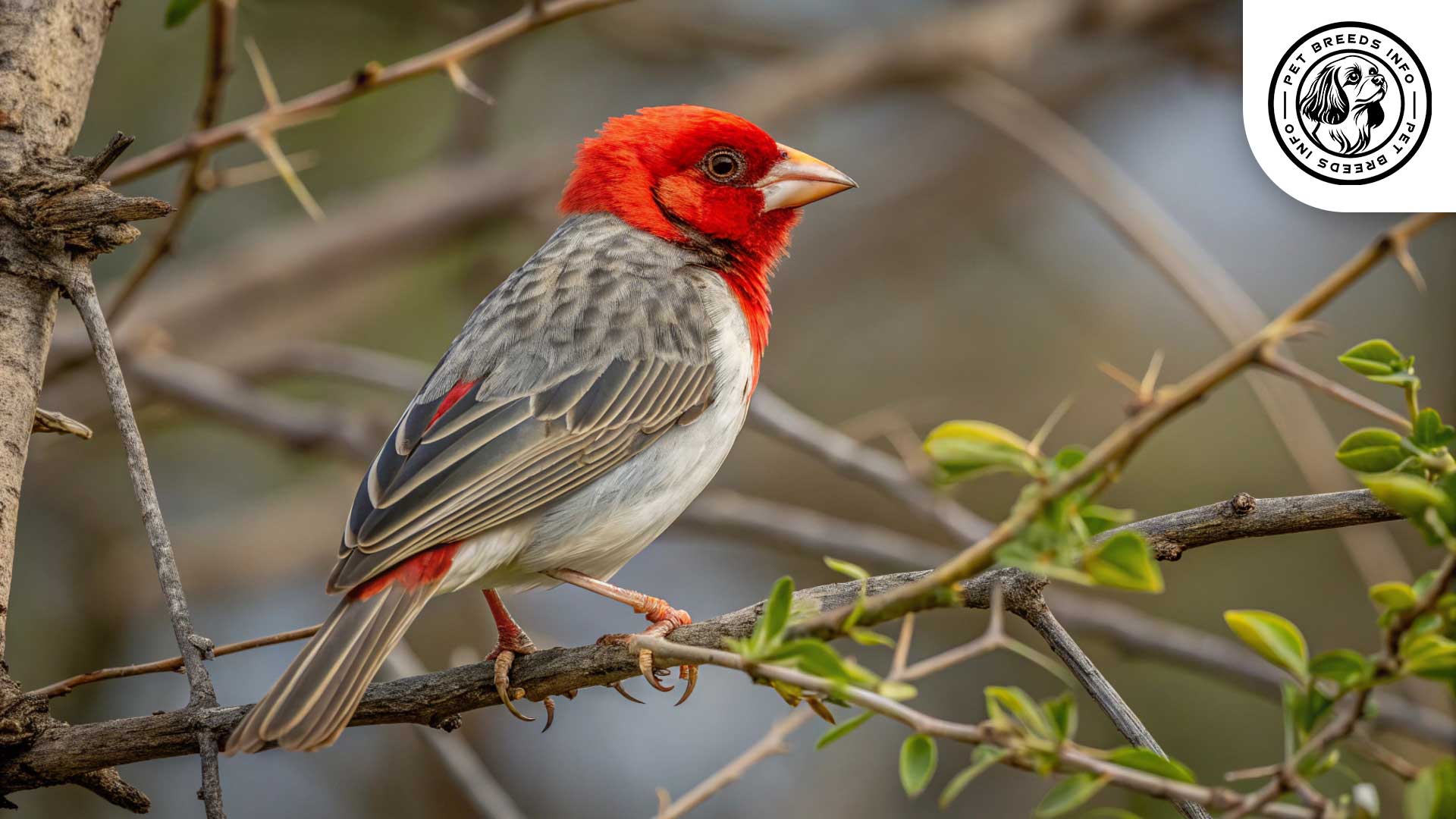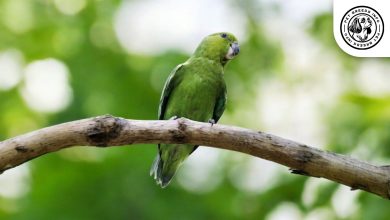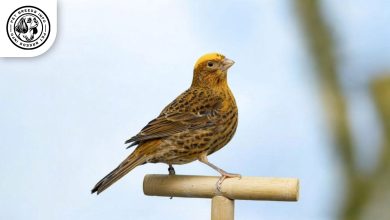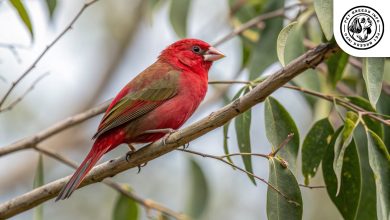Red-headed Quelea Bird: Personality, Lifespan, Food & Care
General Introduction of the Breed
The Red-headed Quelea (Quelea erythrops) is a small, striking bird native to sub-Saharan Africa. It is also known as the Red-headed Weaver-Finch due to its resemblance to other weaver birds. This species belongs to the Ploceidae family and is commonly found in grasslands, savannas, and agricultural areas.
Historically, the Red-headed Quelea has flourished across Africa due to its adaptability to different habitats. It thrives in open areas with abundant food sources, forming large flocks that can sometimes be seen in cultivated fields.
Table of Contents
| Common Name | Red-headed Quelea, Red-headed Weaver-Finch |
| Scientific Name | Quelea erythrops |
| Origin | Sub-Saharan Africa |
| Size | 10 to 12 cm in length, 15 to 20 grams in weight |
| Lifespan | Up to 5-8 years in captivity |
| Talking Ability | Not typically trainable to talk |
| Colors | Males: Striking red head and face, brownish or olive-brown body. Females/Juveniles: Subdued brownish plumage. |
| Noise Level | High energy and active, but the text doesn’t specify a particular noise level. Implies activity. |
| Social Behavior | Highly social, thrives in large flocks, interacts well with other birds. |
Physical Characteristics
The Red-headed Quelea is a small bird, typically measuring between 10 to 12 cm in length and weighing around 15 to 20 grams. Males are slightly more colorful than females, particularly during the breeding season.
This species has a short, conical beak designed for seed consumption. Males exhibit a striking red head and face, with a brownish or olive-brown body, while females and juveniles have a more subdued brownish plumage with no red markings.
The eyes of the Red-headed Quelea are dark brown, complementing its vibrant plumage. It has short, rounded wings and a slightly pointed tail, aiding its agile flight.
Read More: Wood Duck
Personality and Temperament
The Red-headed Quelea is a highly social and active bird. It thrives in large flocks and interacts well with other birds, making it an excellent aviary species.
These birds are inquisitive and constantly engaged in flock activities, such as foraging and group flying. They are not known for being particularly affectionate towards humans but can become accustomed to human presence if raised in captivity.
Their high energy levels require them to have space to fly freely. While they are not aggressive, males may display territorial behavior during the breeding season.
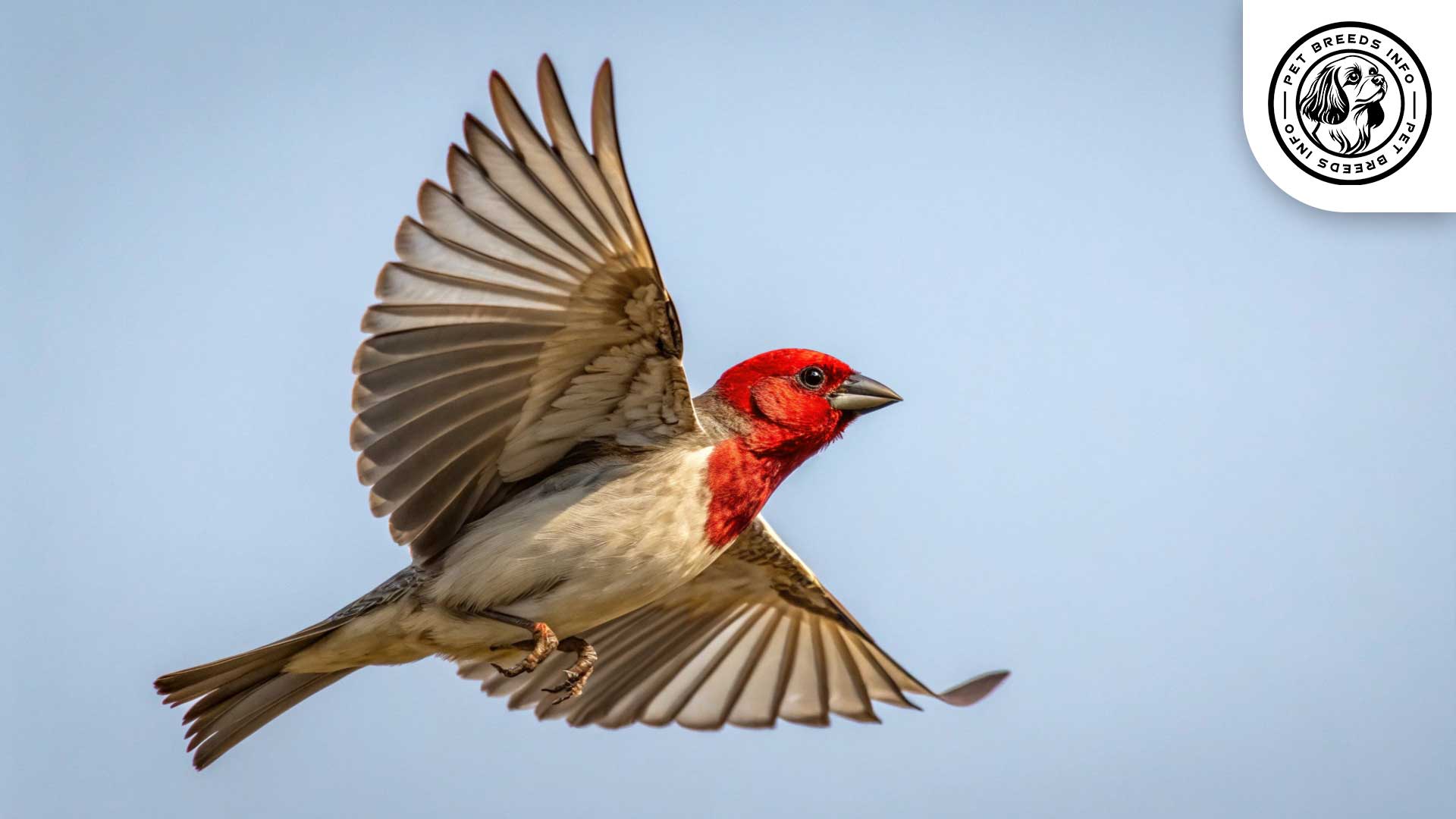
Care and Maintenance Requirements
The Red-headed Quelea requires a spacious aviary or large cage to accommodate its active nature. Ideally, they should be kept in aviary settings with other similar birds for social interaction.
Regular maintenance, such as cleaning the cage, providing fresh food and water, and ensuring environmental enrichment, is essential. They thrive in moderate temperatures and should be protected from extreme cold or heat.
Since they are not known for excessive feather molting, minimal grooming is needed. However, their environment should be kept clean to prevent potential infections.
Diet and Nutrition
A balanced diet for the Red-headed Quelea includes a variety of seeds, particularly millet and small grains. They also enjoy fresh vegetables, fruits, and some protein sources like mealworms.
Foods to avoid include avocados, chocolate, caffeine, and overly processed human foods, as these can be toxic to birds.
Offering food in small portions multiple times a day ensures they have constant access to nutrition without excess waste.
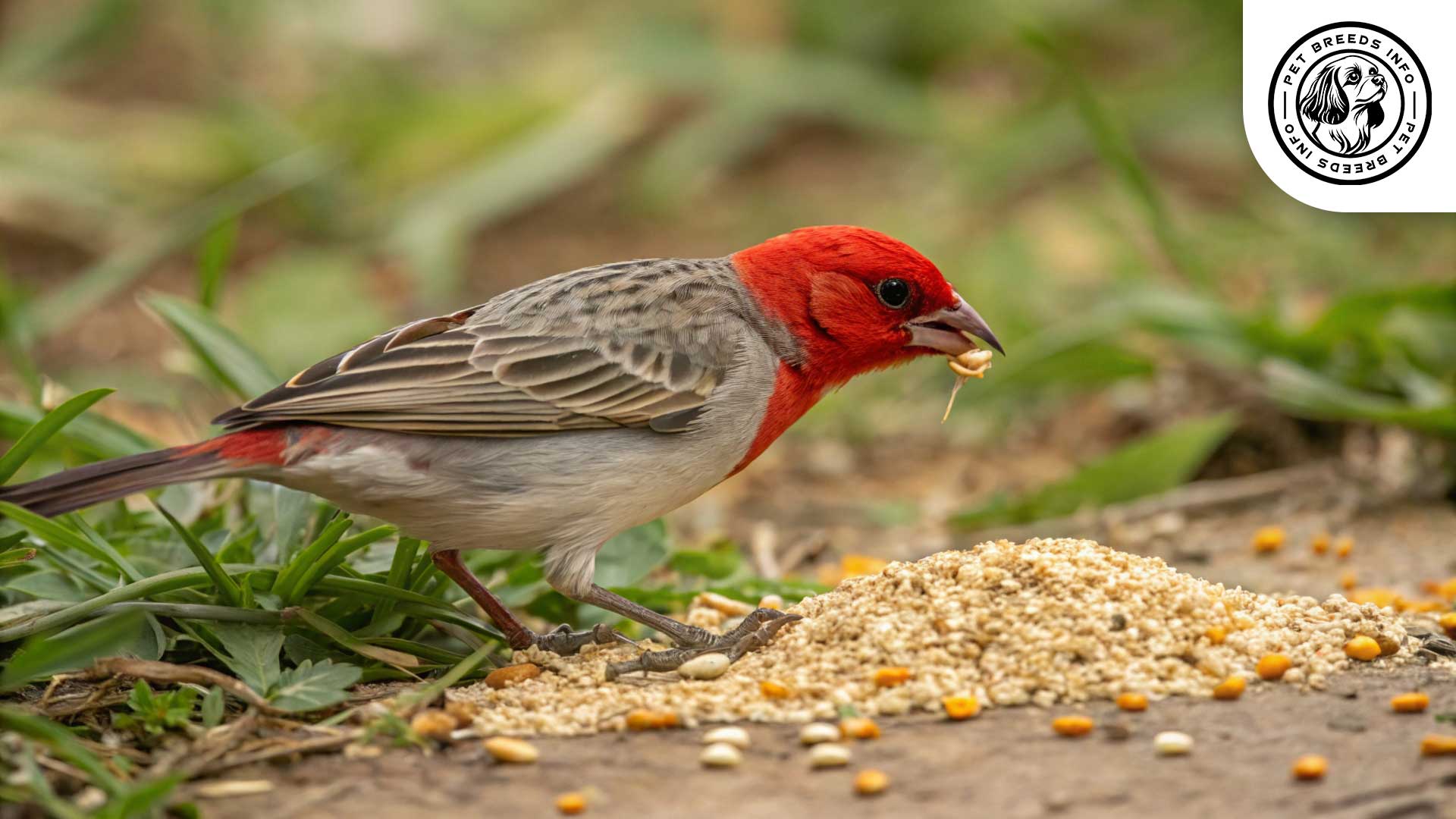
Health and Common Medical Issues
Common health issues in Red-headed Queleas include respiratory infections, mite infestations, and digestive problems related to improper diet. They also need protection from overly damp or cold environments to prevent illness.
With proper care, these birds can live up to 5-8 years in captivity. Routine medical check-ups with an avian veterinarian are essential to prevent and address potential health concerns.
Read More: White Dove
Training and Behavior Management
The Red-headed Quelea is not typically a bird that can be trained like parrots or other more interactive species. However, they can become comfortable around humans with regular interaction.
It is essential to provide an enriched environment with perches, branches, and safe toys to keep them engaged. Positive reinforcement, such as providing treats, can help them associate human interaction with positive experiences.
Interaction with Other Animals and Humans
As a highly social bird, the Red-headed Quelea thrives in groups. They do well in mixed aviaries with finches and other small bird species, provided there is enough space.
They are not particularly affectionate with humans but can coexist in home aviaries without issues. They are best suited for bird enthusiasts who appreciate their natural beauty and flock behavior.
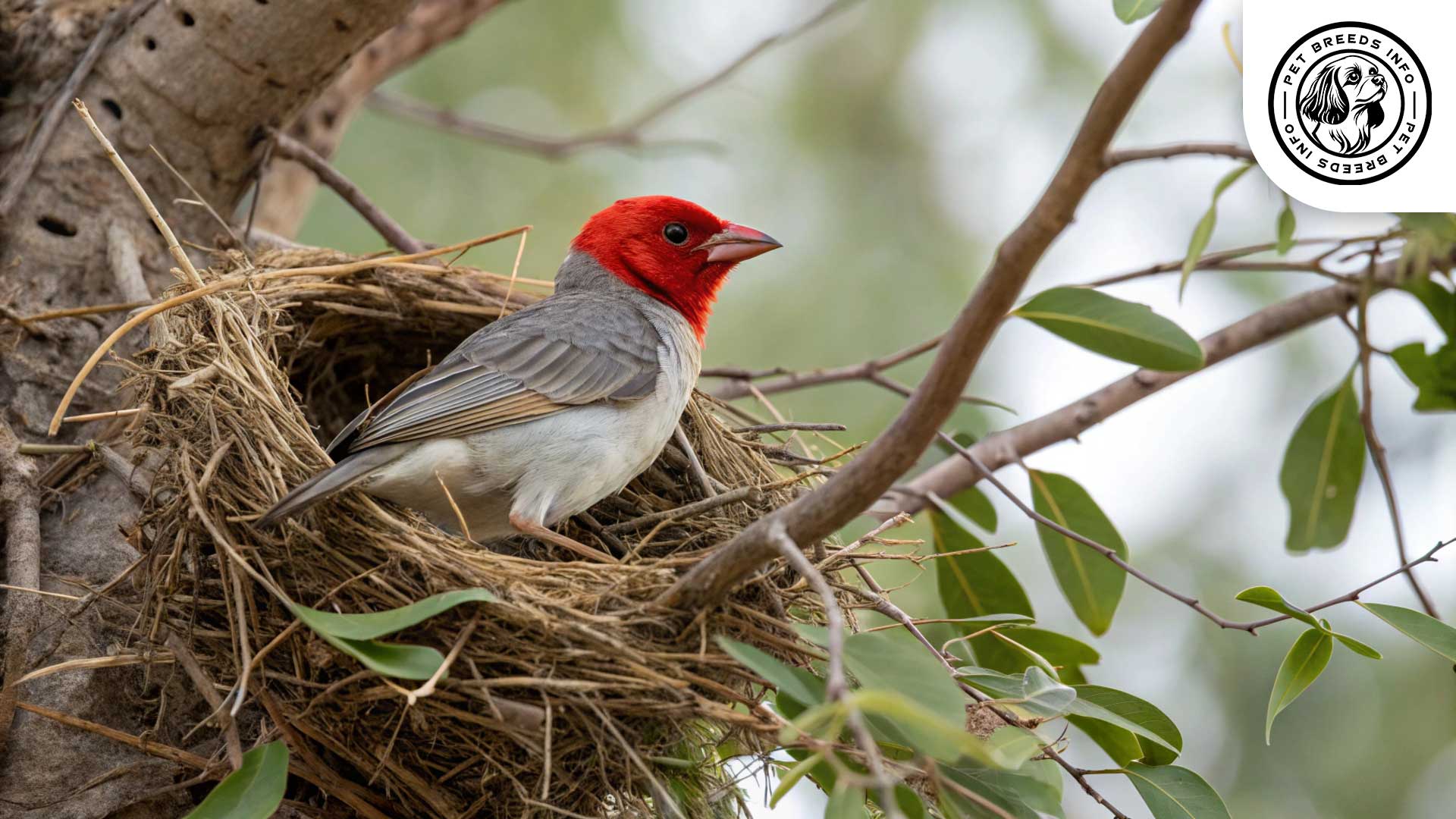
Price and Availability
The Red-headed Quelea is less commonly available in pet stores compared to other aviary birds. Their prices vary, typically ranging between $50 to $150, depending on availability and location.
It is crucial to acquire these birds from reputable breeders or specialized aviary suppliers. Adopting or purchasing from ethical sources ensures the health of the bird and supports responsible bird keeping.
Conclusion and Final Thoughts
The Red-headed Quelea is an excellent choice for bird enthusiasts looking for a visually striking and highly social species. However, they are best suited for aviary settings rather than being kept as solitary pets.
Owners should be prepared to provide a spacious and stimulating environment with other compatible birds. While not a hands-on pet, their beauty and flock behavior make them a fascinating addition to aviaries.
Potential owners should be aware of their dietary needs, environmental requirements, and social nature before obtaining one. With proper care, these birds bring vibrancy and activity to any aviary setup.
Read More: Moluccan Cockatoo Bird
FAQ
Are Red-headed Queleas good pets for handling?
No, they are not known for being particularly affectionate towards humans and are best suited for aviary settings.
What do Red-headed Queleas eat?
Their diet consists mainly of seeds (especially millet and small grains), along with fresh vegetables, fruits, and some protein like mealworms.
How much space do Red-headed Queleas need?
They require a spacious aviary or large cage to accommodate their active nature and should ideally be kept with other similar birds.
What are some common health issues for Red-headed Queleas?
Common issues include respiratory infections, mite infestations, and digestive problems related to diet.
Do Red-headed Queleas need to live in groups?
Yes, they are highly social birds and thrive in flocks, so keeping them with other compatible birds is recommended.
